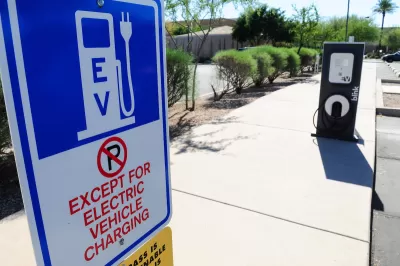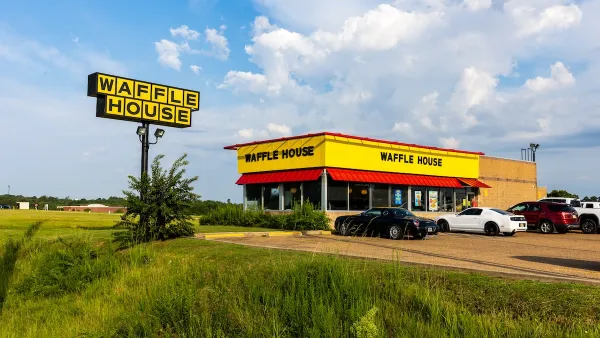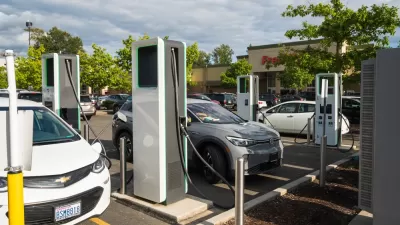A lack of access to charging infrastructure is holding back EV adoption in many US cities.

Writing in PC Mag, Emily Dreibelbis, highlights a paradox: while many electric vehicles are designed for urban environments, “Early adopters are primarily wealthy, single-family homeowners who can power up on private chargers versus those in rental property garages.”
Dreibelbis points out that by 2030, 60 percent of EVs will be in suburbs and “92% of chargers nationwide will be in single-family homes, according to a June 2023 DOE report.” The latter statistic reveals a major reason why urban Americans are less likely to buy electric cars: a lack of charging infrastructure.
[F]or now, EVs are stuck in the suburbs thanks to public charging limitations and a car culture where bigger means better.
The lack of accessible EV chargers in urban areas means urban dwellers can’t benefit from their advantages in the very places they would be most efficient. “When it comes to charging in urban areas, Europe has a few tricks the US hasn't embraced yet, such as converting existing light poles to charging stations. They're BYOC (bring your own cord); drivers pull up and plug in with their own equipment.”
Until urban infrastructure catches up, the suburbs will play a key role in EV adoption, Dreibelbis writes. “They prove that when charging is easy and available, and the driver considers the vehicle affordable, people love EVs.”
FULL STORY: Why Electric Cars Are Built for Cities, But Only Booming in the Suburbs

Planetizen Federal Action Tracker
A weekly monitor of how Trump’s orders and actions are impacting planners and planning in America.

San Francisco's School District Spent $105M To Build Affordable Housing for Teachers — And That's Just the Beginning
SFUSD joins a growing list of school districts using their land holdings to address housing affordability challenges faced by their own employees.

The Tiny, Adorable $7,000 Car Turning Japan Onto EVs
The single seat Mibot charges from a regular plug as quickly as an iPad, and is about half the price of an average EV.

With Protected Lanes, 460% More People Commute by Bike
For those needing more ammo, more data proving what we already knew is here.

In More Metros Than You’d Think, Suburbs are Now More Expensive Than the City
If you're moving to the burbs to save on square footage, data shows you should think again.

The States Losing Rural Delivery Rooms at an Alarming Pace
In some states, as few as 9% of rural hospitals still deliver babies. As a result, rising pre-term births, no adequate pre-term care and "harrowing" close calls are a growing reality.
Urban Design for Planners 1: Software Tools
This six-course series explores essential urban design concepts using open source software and equips planners with the tools they need to participate fully in the urban design process.
Planning for Universal Design
Learn the tools for implementing Universal Design in planning regulations.
Smith Gee Studio
City of Charlotte
City of Camden Redevelopment Agency
City of Astoria
Transportation Research & Education Center (TREC) at Portland State University
US High Speed Rail Association
City of Camden Redevelopment Agency
Municipality of Princeton (NJ)





























